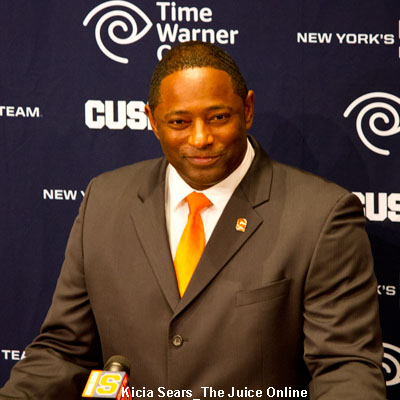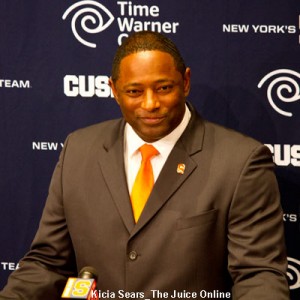

When there is talk about Dino Babers as a football coach, a lot of the chatter is about his offense. It moves at light speed, it racks up points, and it wins games.
Unfortunately, these are not things that Syracuse fans have been used to seeing on a regular basis in recent seasons. Hopefully, it will be something simple for them to adjust to.
In his first season at Bowling Green, Babers’ offense piled up some fun stats:
In 2014, they ran 78.8 plays per game and averaged 5.5 yards per play, piling up 30 points per game (57th in the country).
In comparison, the 2012 Syracuse team was the last Orange squad that did significant damage on offense. That squad ran 79.1 plays per game and notched 6.0 yards per play en route to 30.0 points per game, good for 56th in the nation.
So, the 2012 SU offense produced at a reasonably close level to what Babers’ 2014 BG team did.
There are, however, some things to know about that 2014 Falcons team.
» More SU football: Ervin Philips — Meet the 2016 Syracuse Football team
First, their returning starting quarterback, Matt Johnson, only played in their first game before being lost for the season with a hip injury. Johnson threw for nearly 3,500 yards and posted a 25:7 TD:INT ratio the prior season and was replaced by a pair of quarterbacks who had four collegiate pass attempts under their collective belts. Under Babers, those raw quarterbacks finished with a 16:13 ratio.
In other words, Babers’ offense, under inexperienced quarterbacks in their first year in the system, produced offensive numbers that were comparable to the best offensive numbers Syracuse has seen in about 15 years.
The breakneck tempo does not mean that the offense is completely pass-happy, either. When you remove sacks, which count as rushing plays, that 2014 Falcons team had 547 pass attempts and 528 rushing attempts.
With as well as the stable of Syracuse backs played in the spring game, it is not much of a stretch to imagine the Orange maintaining a similar 50-50 playcalling split.
The fast pace of Babers’ offense does not automatically mean his teams commit more turnovers. In 2014, Bowling Green committed 1.6 turnovers per game on 78.8 offensive plays for a 2.0 percent turnover rate. In comparison, the 2012 Orange had a 2.1 percent turnover rate and last year’s Syracuse team had a 2.4 percent turnover rate by committing a similar number of total turnovers while operating at a lot slower pace (62.6 plays per game).
Babers has cautioned the fan base by informing them that his offense tends to pick up midway through the second season, as it takes a while for the players to get comfortable with it. And the stats back him up.
The second season under Babers at Bowling Green, their offensive numbers were boosted to 81.1 plays per game, 6.7 yards per play, and 42.3 points per game (6th-highest in FBS).
Johnson returned to the offense and aired out the ball for almost 5,000 passing yards and 46 scores against eight picks.
The 2015 BG team maintained their offensive balance, finishing with 594 passes to 506 rushes (again, sacks removed) and also had reduced their turnover rate to 1.4 percent.
But, that’s for us to ponder in 2017. For 2016, we get the chance to see the first steps.
For more Syracuse coverage, Like our Facebook page and follow us @TheJuiceOnline.

